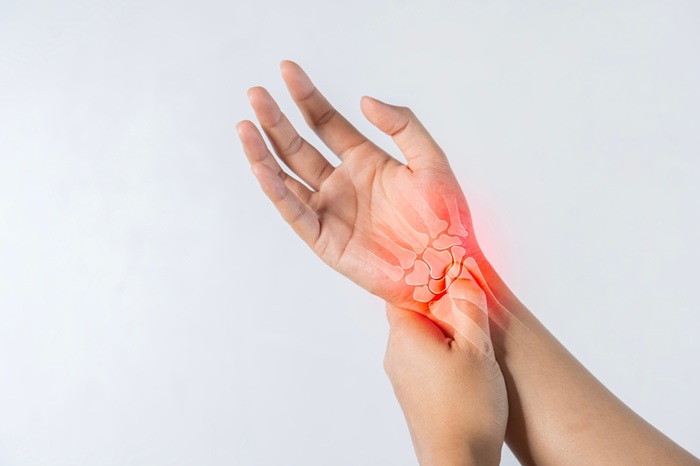Osteoporosis is a condition characterised by weakened bones, making them fragile and prone to fractures. Symptoms include back pain, loss of height, and frequent fractures. Causes range from aging and hormonal imbalances to poor nutrition and lifestyle habits. Treatment focuses on medications, dietary changes, and exercise. Prevention and early diagnosis via a bone mineral density test are crucial to managing the condition.

Osteoporosis, meaning “porous bones,” is a condition where bones become weak and brittle due to a loss of density. It develops silently over time and is often discovered when minor injuries result in a fracture.
Bone strength relies on its density, which peaks in your early 20s. As we age, this density naturally declines. However, for individuals with osteoporosis, this loss happens at a much faster rate, significantly increasing the risk of fractures, particularly in the hips, spine, and wrists. Women, especially after menopause, are at a higher risk due to the rapid drop in oestrogen levels, a hormone vital for bone health.
Osteoporosis isn’t just a natural consequence of aging—it’s preventable and manageable with the right lifestyle choices and medical interventions.
Osteoporosis is often called a “silent disease” because its symptoms may not be apparent until a fracture occurs. Common symptoms include:
These osteoporosis symptoms should not be ignored. Early intervention can help prevent further complications.
The causes of osteoporosis can be broadly categorised into lifestyle, medical, and genetic factors:
As we age, the natural process of bone regeneration slows down significantly. In younger years, the body produces new bone tissue faster than it breaks down old bone, maintaining bone density. However, after the early 30s, this balance shifts, leading to gradual bone loss. For many, this loss is mild, but in some cases, it accelerates, resulting in osteoporosis.
Hormones play a critical role in maintaining bone health. In women, oestrogen helps protect bone density. After menopause, a sharp decline in oestrogen levels leads to accelerated bone loss. Similarly, men experience lower testosterone levels as they age, which also contributes to weaker bones. Disorders affecting hormone production, such as thyroid imbalances, further exacerbate this process.
Calcium is the primary building block of bones, while vitamin D facilitates its absorption in the body. Insufficient intake of these nutrients weakens the bone structure over time, making them more prone to fractures. Poor dietary habits and limited sunlight exposure often contribute to this deficiency.
Certain habits significantly increase the risk of developing osteoporosis:
Chronic illnesses such as rheumatoid arthritis, hyperthyroidism, and chronic kidney disease can contribute to bone weakness. These conditions often involve inflammation or impaired metabolism, which can disrupt the normal balance of bone renewal.
Genetics play a significant role in bone health. If you have a close relative with osteoporosis or a history of fractures, your risk of developing the condition is higher. Genetic predispositions can also determine peak bone density and how quickly bone loss occurs over time.
Environmental factors, such as long-term exposure to certain medications like corticosteroids, can also increase the risk.
Treatment focuses on strengthening bones, alleviating symptoms, and preventing fractures.
Medications play a pivotal role in managing osteoporosis:
A balanced diet rich in essential nutrients supports bone health:
Weight-bearing and resistance exercises improve bone density and reduce fracture risk. Activities like walking, jogging, and strength training also enhance balance, reducing the likelihood of falls.
A bone mineral density test is a non-invasive diagnostic tool that measures bone strength. It’s essential for individuals at risk, particularly postmenopausal women and older adults.
Stay active: Regular exercise maintains bone and muscle health.
If you experience persistent back pain, notice a reduction in height, or suffer fractures from minor incidents, consult a specialist immediately. For residents in Bangalore, by visiting SPARSH you can have access to some of the best orthopaedic doctors in Bangalore in an advanced diagnostic facility with personalised care. Early diagnosis can prevent severe complications and improve quality of life.
Osteoporosis is a manageable condition with early diagnosis and appropriate care. Focusing on osteoporosis prevention through a healthy diet, regular exercise, and avoiding harmful habits can significantly reduce the risk. Medications and lifestyle adjustments further help maintain bone density and reduce fracture risks.
Don’t wait for a fracture to take action. Regular screenings and consultations with healthcare providers are key to lifelong bone health.
Ageing, hormonal changes, calcium and vitamin D deficiencies, and unhealthy lifestyle choices are the leading causes.
Symptoms include back pain, frequent fractures, loss of height, stooped posture, and weakened grip strength.
Bisphosphonates, HRT, and lifestyle changes are commonly used. The best approach depends on individual needs.
Yes, it can lead to severe fractures, chronic pain, and reduced mobility if left untreated. Early diagnosis and management are crucial.
Categories: Orthopedics
Osteoporosis: Symptoms, Causes and Treatment is available for appointments. Please fill the below form to book an appointment.
Unlock the door to exceptional healthcare, book an appointment with SPARSH Hospital and let your journey to wellness begin.